Newcomer ZTE Blade VEC 4G challenges budget 4G smartphones
ZTE enters the crowded and competitive smartphone market in Singapore with three models, of which the Blade VEC 4G is the flagship product. Besides its attractive price tag of S$299, can the Blade VEC 4G impress us over its competitors? We tell you in this review.
By HardwareZone Team -
Overview
Just like Huawei, ZTE is a Chinese telecommunications equipment and systems company. While its main business is supplying networking gear such as routers and switchers to global telcos, ZTE is also trying to expand its consumer-device business (smartphones) to fuel growth.
Following the footsteps of Xiaomi's global expansion, ZTE recently expanded its presence in South East Asia with the launch of three smartphone models, the Nubia Z5S Mini, Blade L2 and KIS 3. Earlier today, the company just announced the launch of the Blade VEC 4G, Blade L2 and KIS 3 in Singapore.
Of the three models, the Blade VEC 4G stands out the most as it is the flagship device and comes with a sweet price tag of S$299. At this price point, the Blade VEC 4G is competing with the recent phone models such as the ASUS ZenFone 5, HTC Desire 610, Motorola Moto G with 4G and Xiaomi Mi 3.
It's obvious that ZTE is engaging a price war with Xiaomi and the other phone vendors in Singapore. So what does ZTE and the Blade VEC 4G bring to the table that its competitors do not? Can it really take market share away from Samsung as it boldly claimed? Well, let's find out in this review. Before you read on, here's a quick overview of the three ZTE smartphones launching here:
Design & Handling
The Blade VEC 4G looks like a hybrid between the Huawei's smartphones and Motorola Razr Maxx with its design choices. Its curved top and bottom seems to be inspired from the deliberate design element of Huawei's phones such as the Ascend G6 4G, P6, and P7. While it may seem like ZTE is mimicking its competitor, it does make the Blade VEC stand out from the rest of the phones which sport the typical flattened top and bottom.
Its rear is made of glass fiber with a patterned stripe design, which looks very similar to the kevlar fiber coated back of the Motorola Razr Maxx. ZTE claims that this not only makes the Blade VEC 4G look fashionable, it also "effectively avoids scratches". The glass fiber finish may not boast the same level of scratch resistance as the renowned Corning Gorilla Glass, but it seemed to be doing its job quite well as we did not notice any scratches on its rear after a week of usage. It also masks fingerprints and smudges quite well.

"Fashionable" may not be the right word to describe the rear of the ZTE Blade VEC 4G, but you get the idea of what the company is trying to achieve.
The back is non-removable, which means that its battery cannot be removed as well. Its micro-SIM card slot is located at the left side of the device. Having said that, the Blade VEC 4G does not support dual-SIM unlike the Blade L2 and KIS 3.
The build quality is somewhat decent; like most other phone manufacturers, ZTE chose to use plastic in the construction of the chassis. While it's nowhere as solid as the ASUS ZenFone 5 and Xiaomi Mi 3, there was almost no flex in the phone's body. The Blade VEC 4G is also surprisingly light at 131.8g when compared to the ZenFone 5 and Mi 3, both of which weigh in at 145g.
Overall, the lightweight and compact form factor makes the Blade VEC 4G easy to use in one hand. ZTE also got it right by placing the power button and volume controls on the right side of the device, making it easy for us to reach out for them. There are still phone makers out there who fail to understand this simple usability logic when designing their phones. One example is the HTC Desire 610 where the power button is located on the top side. When a phone is sporting a 5-inch screen or thereabout, you can't quite continue the same design aspects from smaller sized devices.

The right side view of the phones. <br>Top to bottom: HTC Desire 610, ZTE Blade VEC 4G, ASUS ZenFone 5 and Xiaomi Mi 3.
There are, however, some design choices undertaken by ZTE that differed from the established norm. The 3.5mm audio output jack and the micro-USB 2.0 port switch locations; the audio jack is at the bottom right side while the micro-USB port is on the top left side. As most phone models sport the opposite configuration, users of the Blade VEC 4G may take some time to adapt to the different layout, but it's certainly something that's adaptable.

The ZTE Blade VEC 4G is the odd one out with its micro-USB port at the top. <br> Top to bottom: HTC Desire 610, ZTE Blade VEC 4G, ASUS ZenFone 5 and Xiaomi Mi 3.

The 3.5mm audio output jack on the ZTE Blade VEC 4G is located at the bottom of the device. <br> Top to bottom: HTC Desire 610, ZTE Blade VEC 4G, ASUS ZenFone 5 and Xiaomi Mi 3.
If you haven't noticed by now, the Blade VEC 4G lacks a memory card slot. As such, you have to make do with the available storage space on the device. Even though the Blade VEC 4G comes with 16GB internal storage, only 12.86GB of user storage space is available.
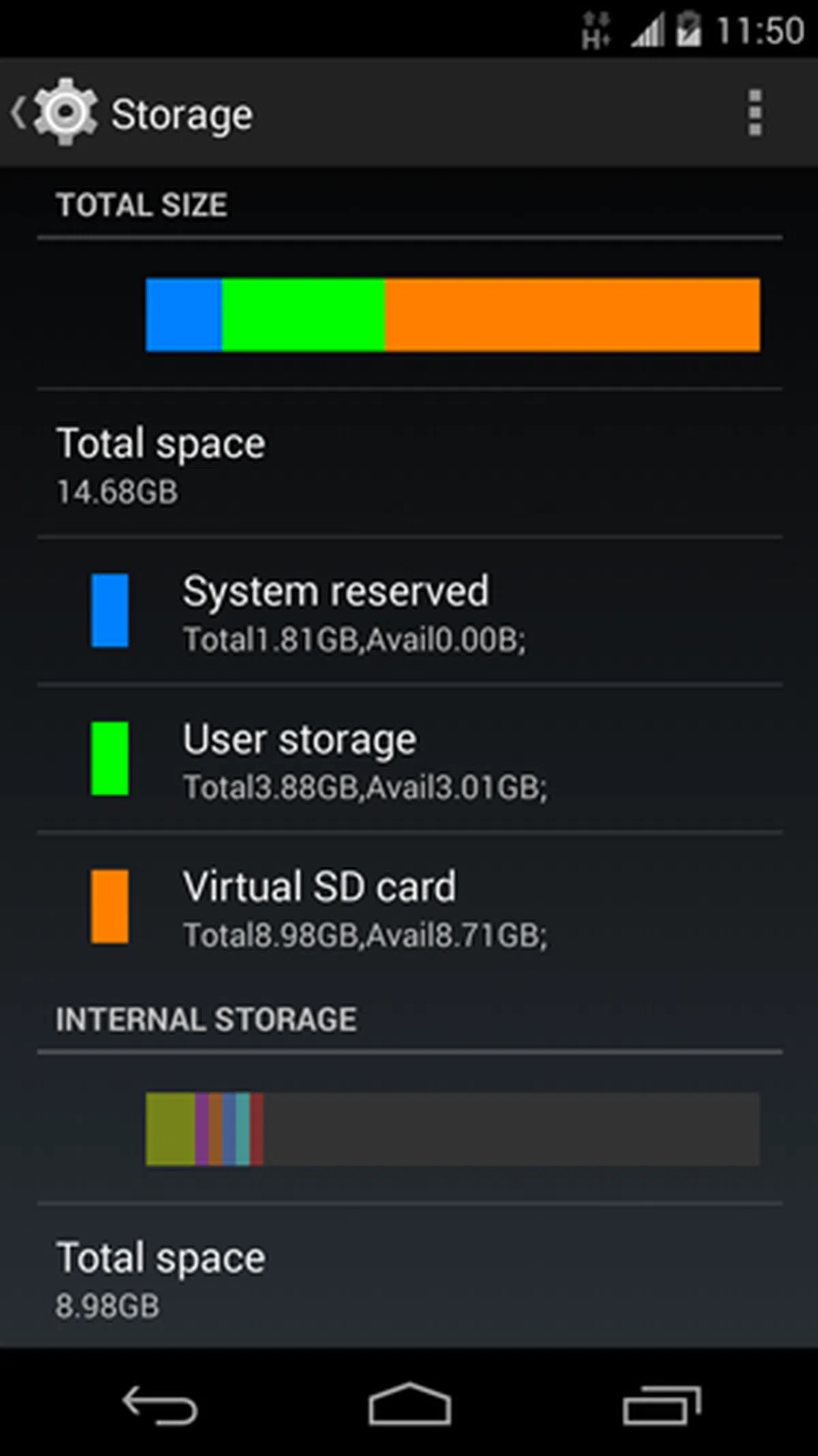 | 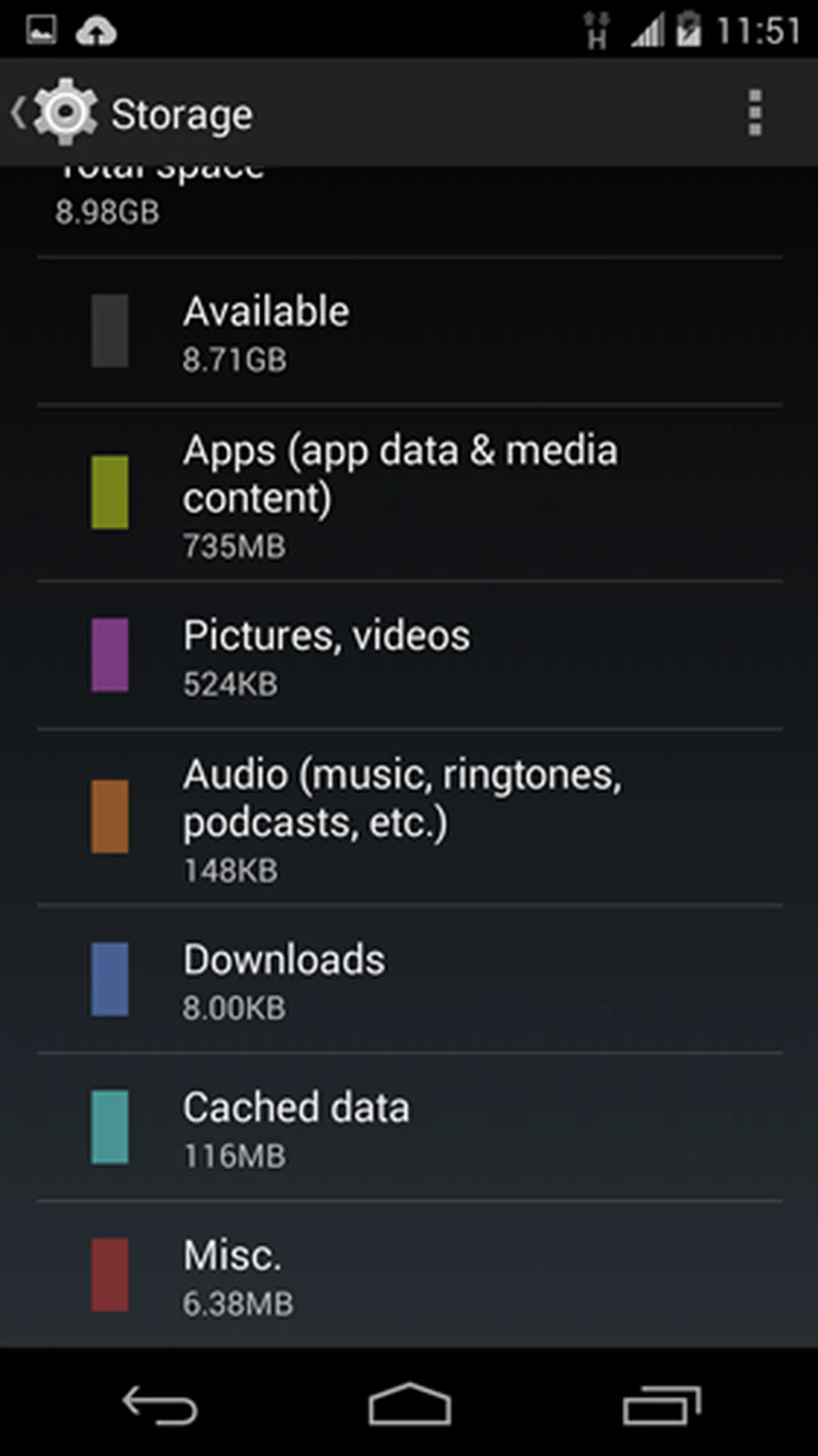 |
5-inch HD Display
The Blade VEC 4G comes with a 5-inch HD (1,280 x 720 pixels) IPS display. This is in-line with the ZenFone 5 and Motorola Moto G with 4G, but a step down from the Mi 3 which has a Full-HD (1,920 x 1,080 pixels) display. Nonetheless, the resolution on the display is plenty dense enough at 294ppi. As expected of IPS panel, viewing angles are great on the Blade VEC 4G and screen brightness can be a little over the top if pushed to its maximum.
One of the Few Non-Nexus Phones to Ship With Google Now Launcher
Last month, ZTE announced that the Blade VEC 4G is one of the first few smartphones among non-Nexus and non-Google Play Experience (GPE) devices to ship with preloaded Google Now Launcher (GNL). Starting with the Blade VEC 4G, ZTE will preload GNL on all its smartphones running on Android 4.4 and above.
Our review unit did not come preloaded with GNL. We've checked with ZTE on this and they clarified that they are in the midst of testing GNL on the local networks. The retail units from end-August will be preloaded with GNL. So what's the hype over using GNL on its smartphones?
A star feature of GNL is the "Ok, Google" voice command, where you can search the Internet, play music, set alarms/reminders and send text messages. It was an exclusive feature of the Nexus 5 for many months before Google made it available for the other Nexus and GPE phones in February. Other benefits of GNL touted by ZTE include a visually appealing interface, and a fast and snappy user experience.
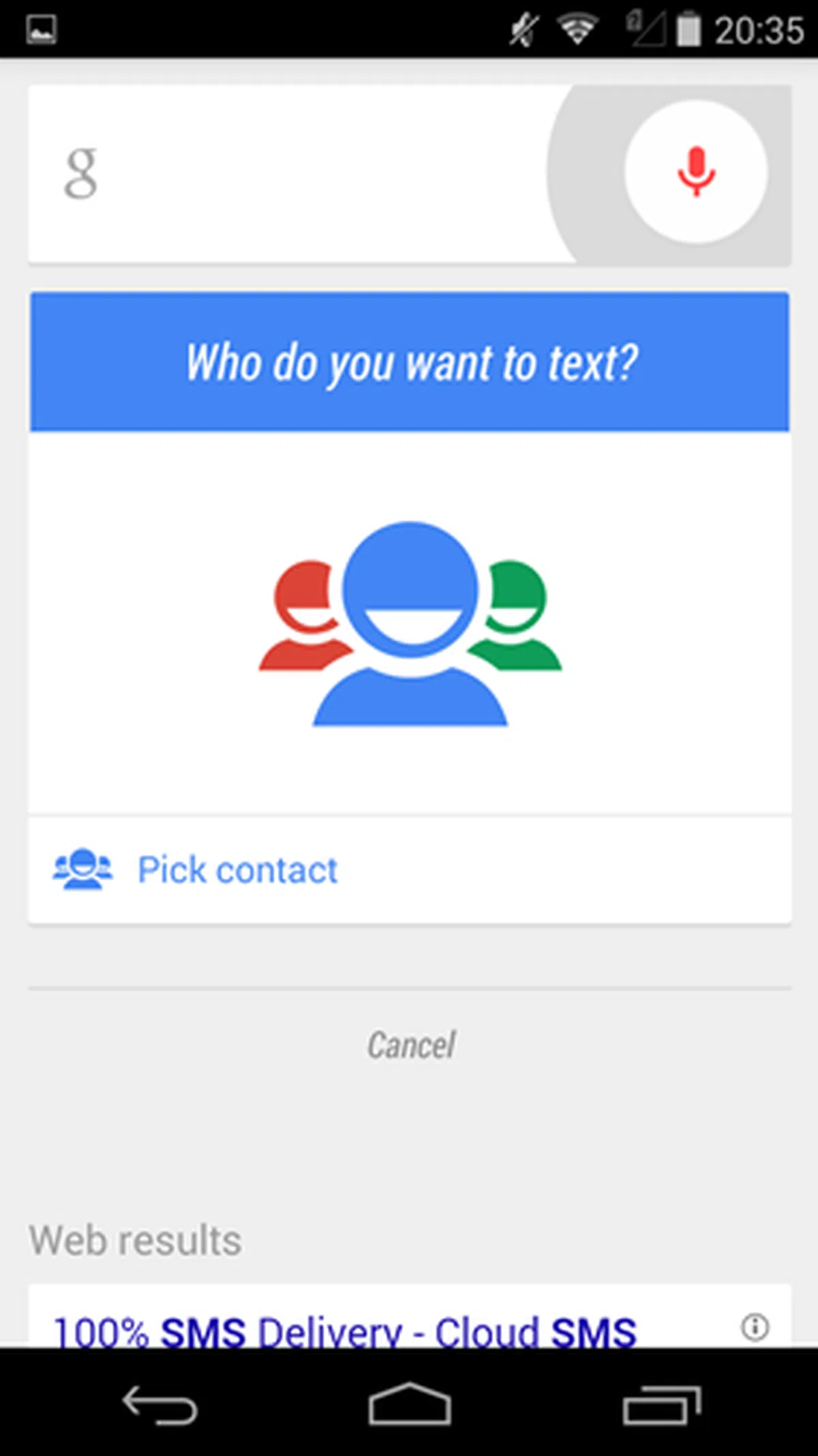 | 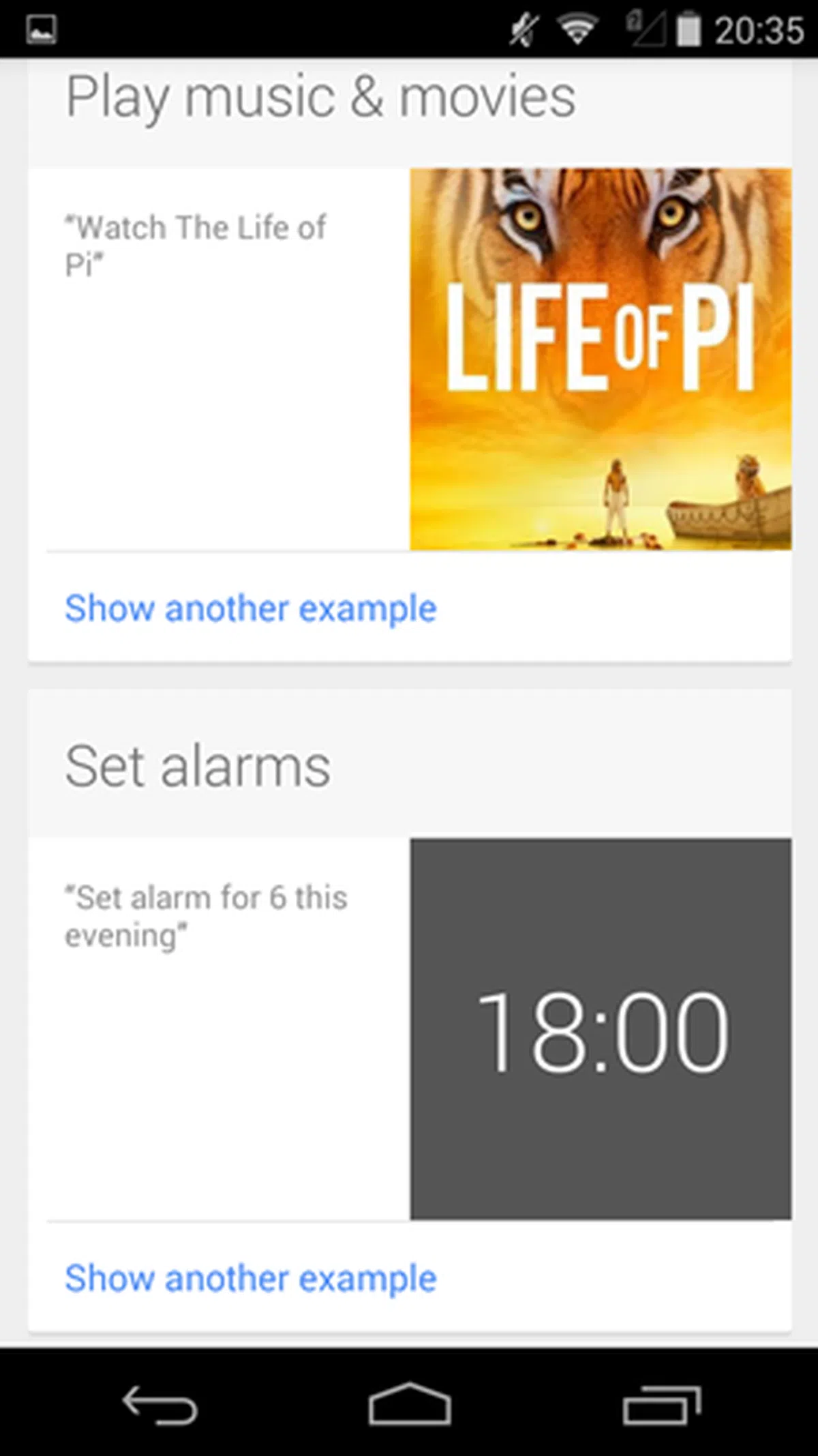 | 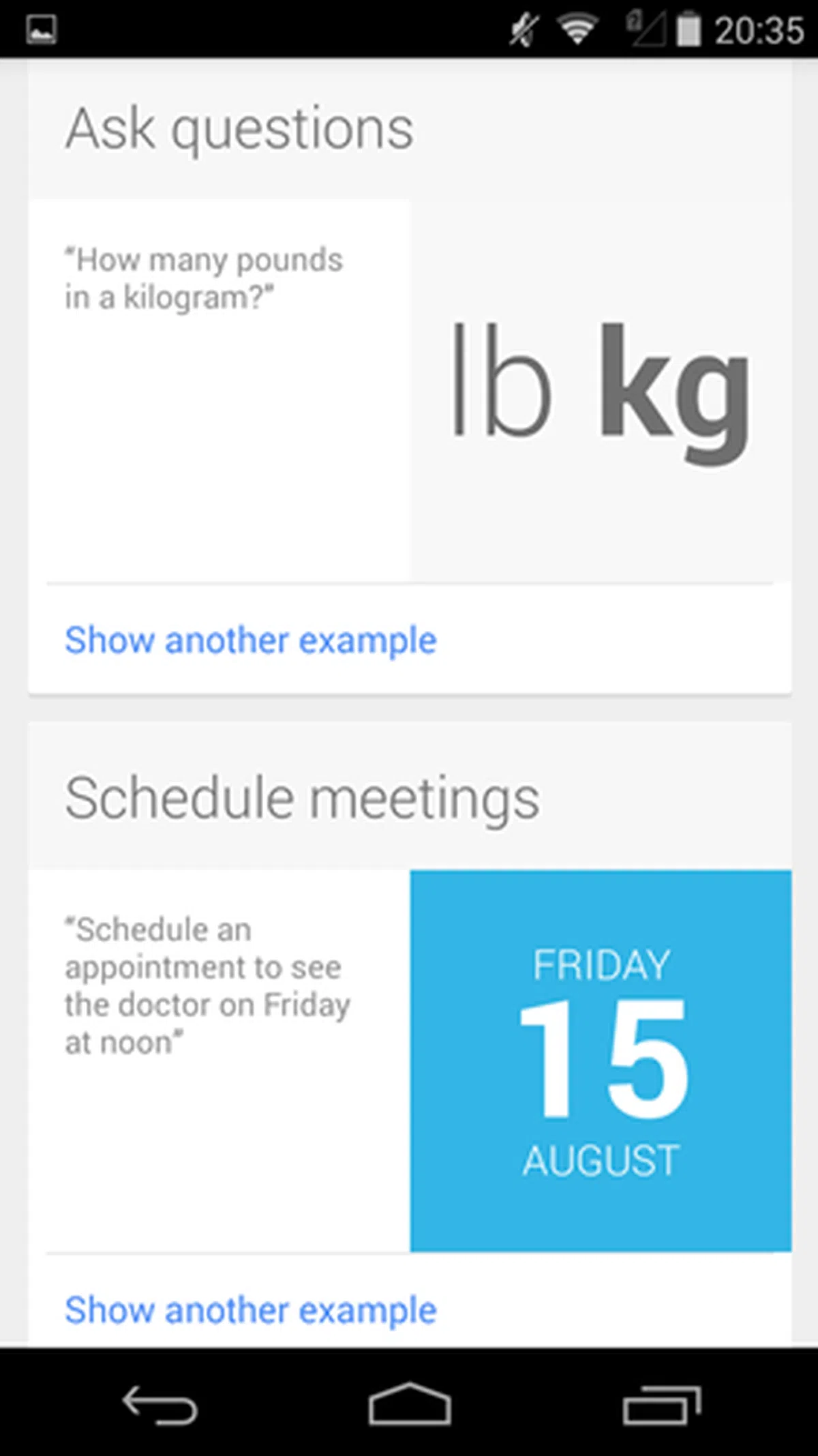 |
While we applauded ZTE's close partnership with Google to implement this across its smartphone portfolio, it is no longer a major marketing or selling point for ZTE. Google has made GNL available for all Android 4.1+ devices more than a week ago. Besides GNL, users can choose two other launchers on the Blade VEC 4G which are its own launcher and a Family Mode.

Out of the box, you have three launchers to choose from on the ZTE Blade VEC 4G.
ZTE's Launcher
Like many other Android vendors, ZTE has a customized launcher for the Blade VEC 4G. While ASUS, HTC and Samsung came up with unique names for their customized interfaces, ZTE simply called it "Launcher". On the surface, Launcher looks no different from stock Android. However, it differs in some aspects:
Lock Screen
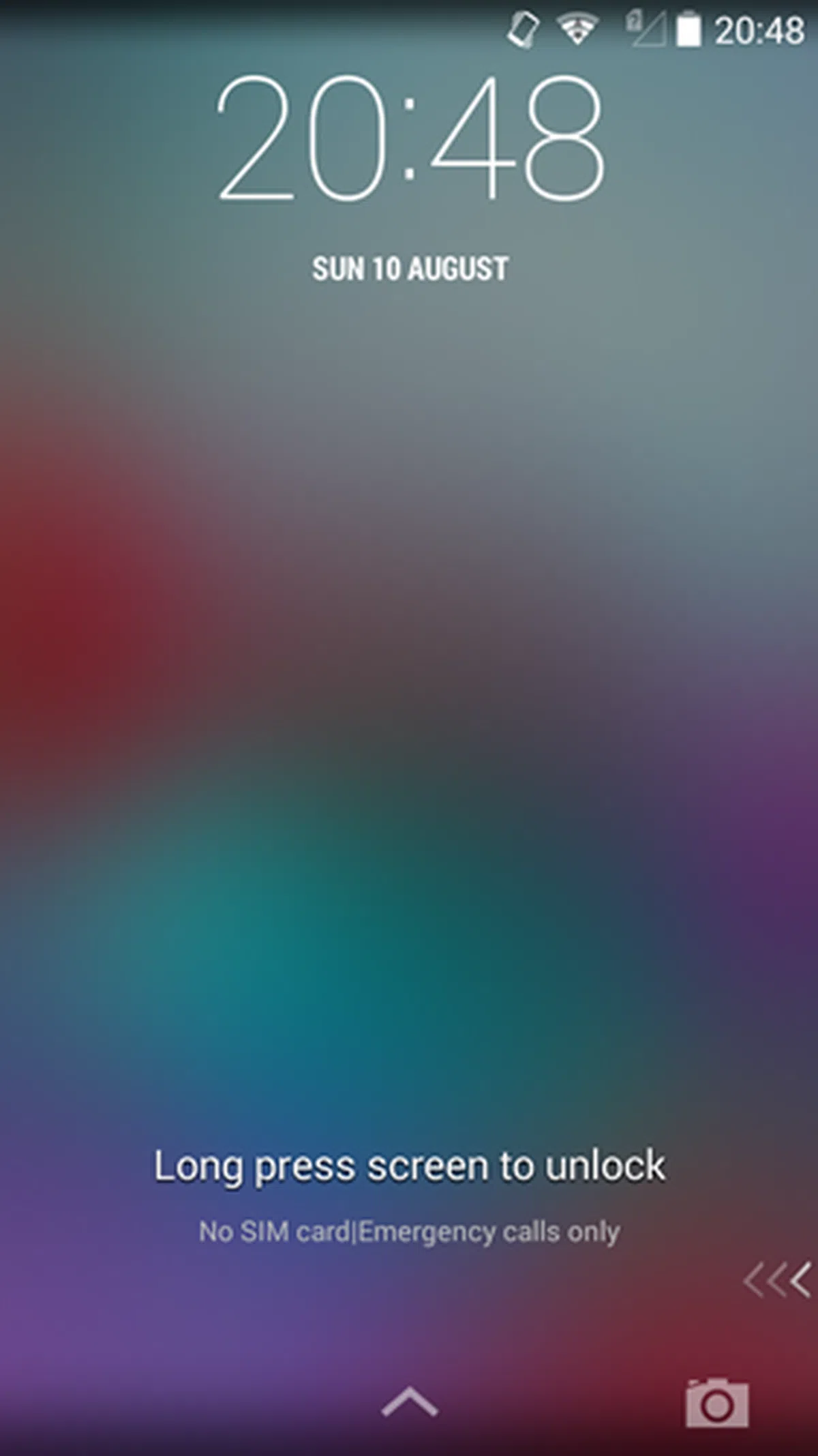 | 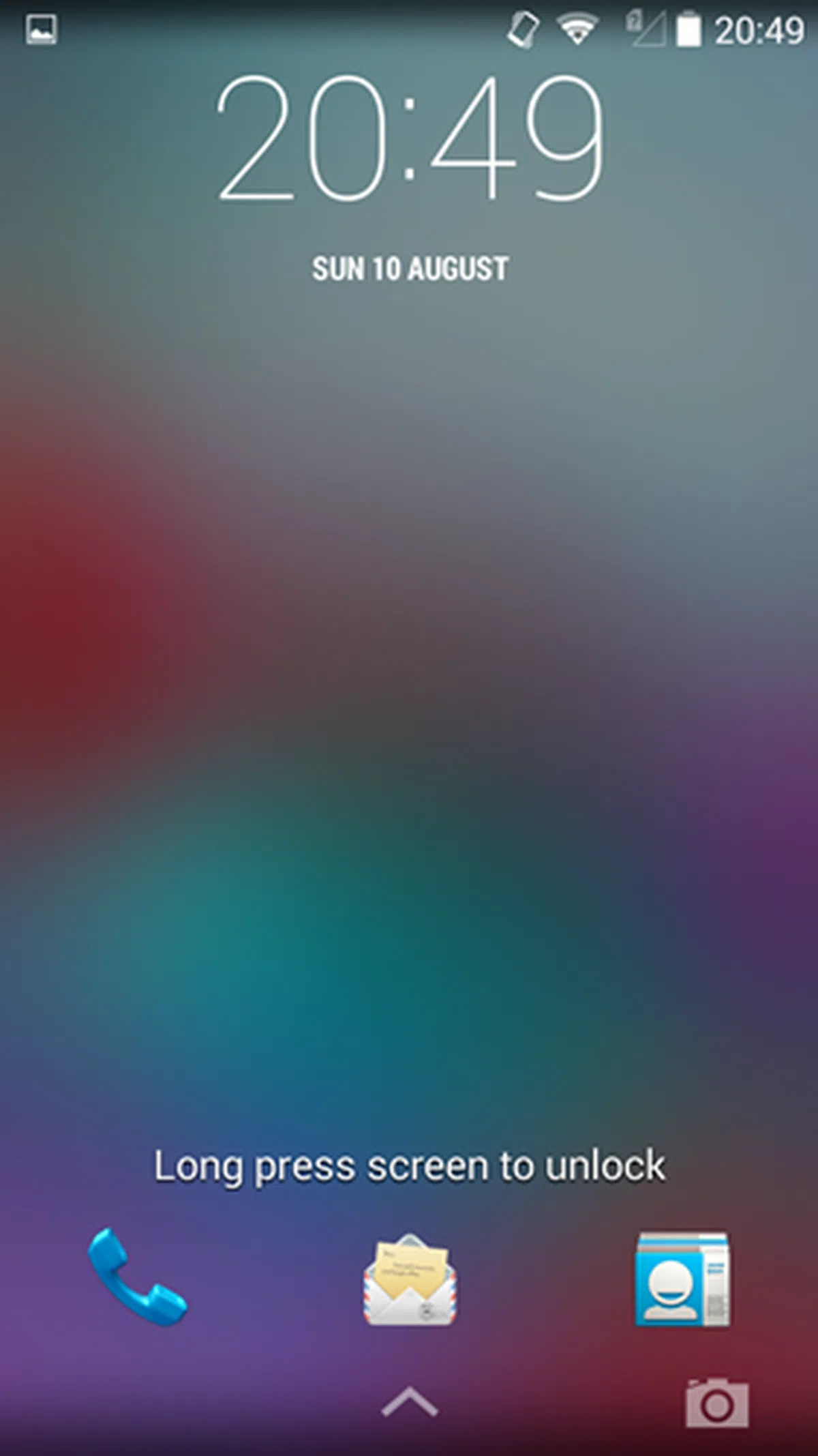 |
Most, if not all mobile operating systems - Apple iOS, BlackBerry 10 OS, Google Android and Windows Phone - require you to swipe across the lock screen to unlock. ZTE decided to take a different approach by making it mandatory to long press on the screen. It may be a deliberate attempt by ZTE to differentiate its phones from the pack, but we viewed it as unintuitive.
By going against the common practice, ZTE is making it a tad harder for the user to adapt to its style. It took us quite a while to adapt to ZTE's implementation and when we eventually got used to it, we find ourselves long-pressing on other Android smartphones which irritated us further. Changing to GNL does not address this issue.
Home Screen
 | 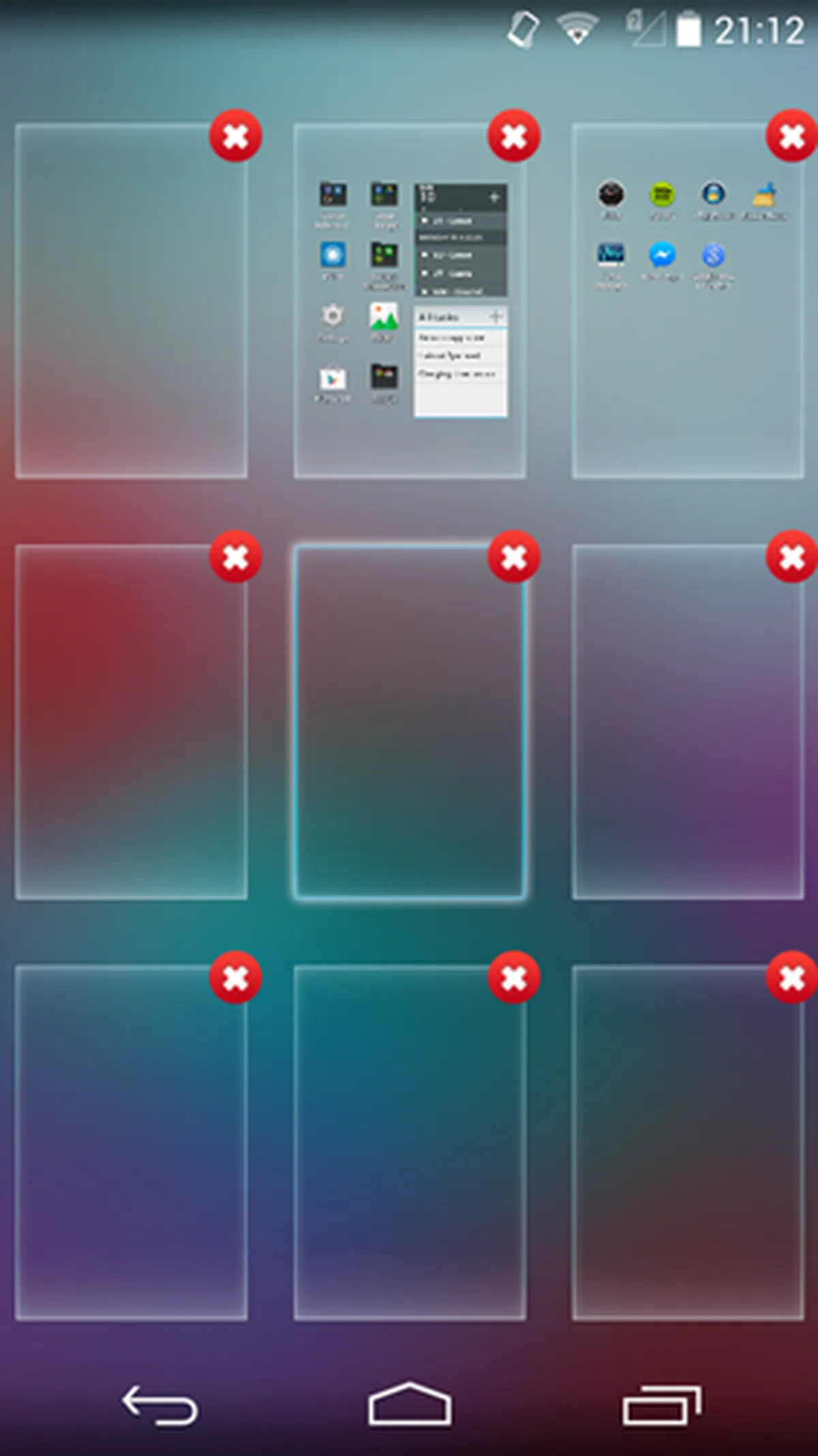 | 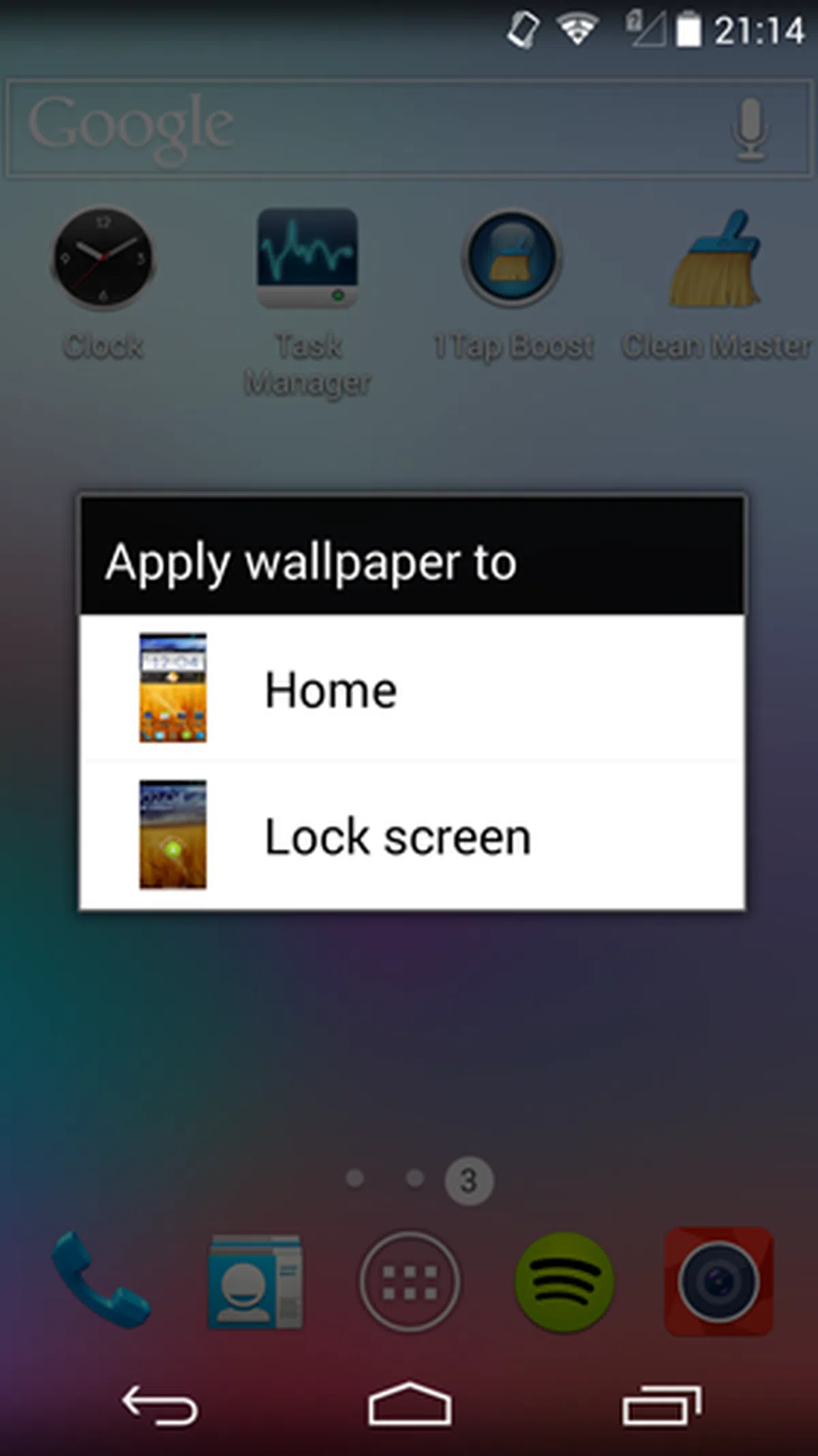 |
Despite running on Android 4.4 KitKat, the Launcher does not allow you to add widgets by long-pressing on the home screen. Doing so only brings up the settings to change the wallpaper for the home screen and lock screen. You have to access the App List to swipe to the Widgets section, touch and hold to pick up the widget and drag it to the home screen.
Virtual Key - Ability to hide the navigation buttons
As there is no hardware navigation buttons on the Blade VEC 4G, you have to rely on the software keys to navigate the interface. The on-screen buttons can interfere with game play and reading, hence ZTE includes an option to automatically hide them after five seconds. To access them again, simply swipe up from the bottom. This feature is also used by Huawei for some of its smartphones such as the Ascend Mate.
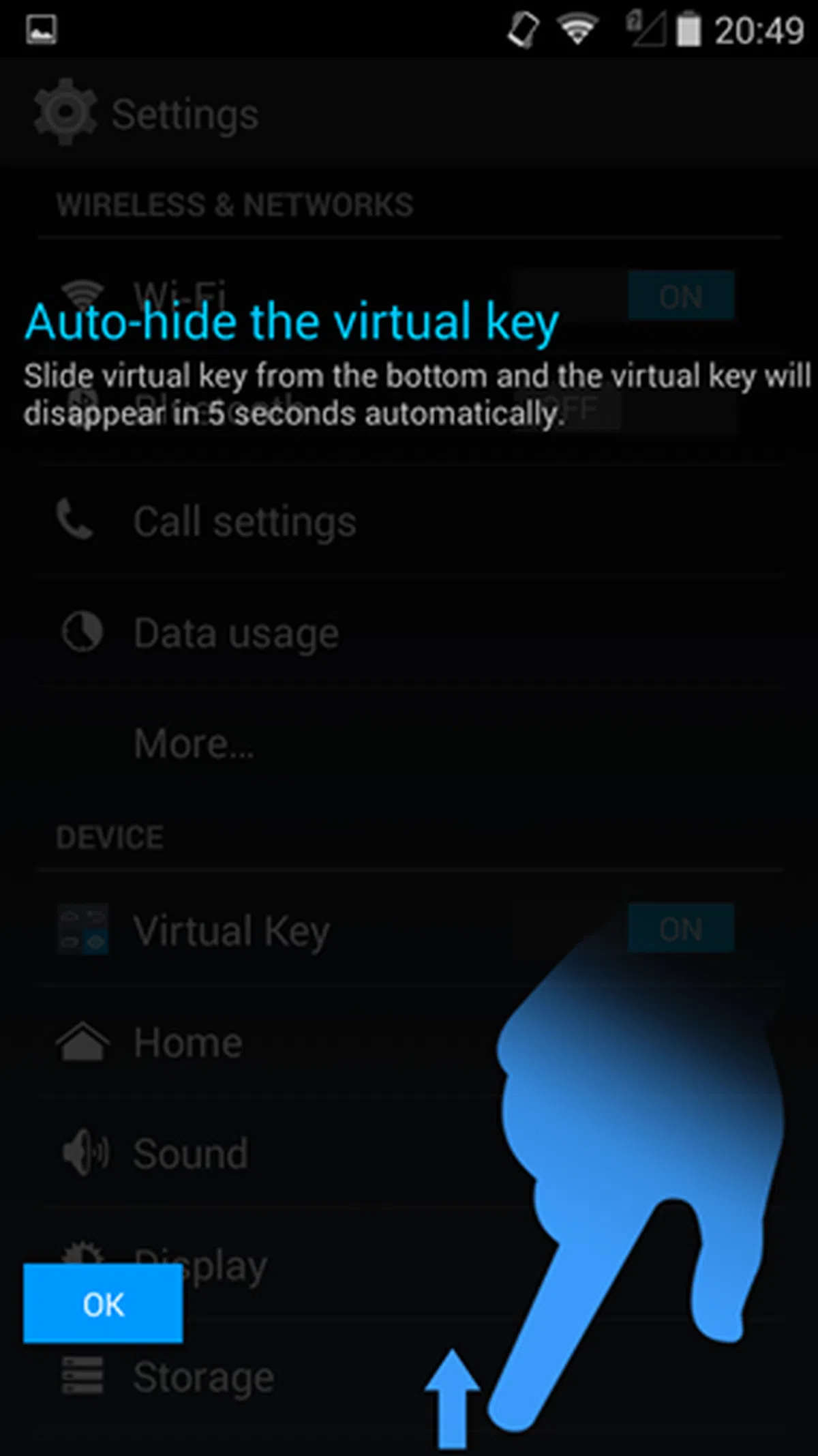 |  | 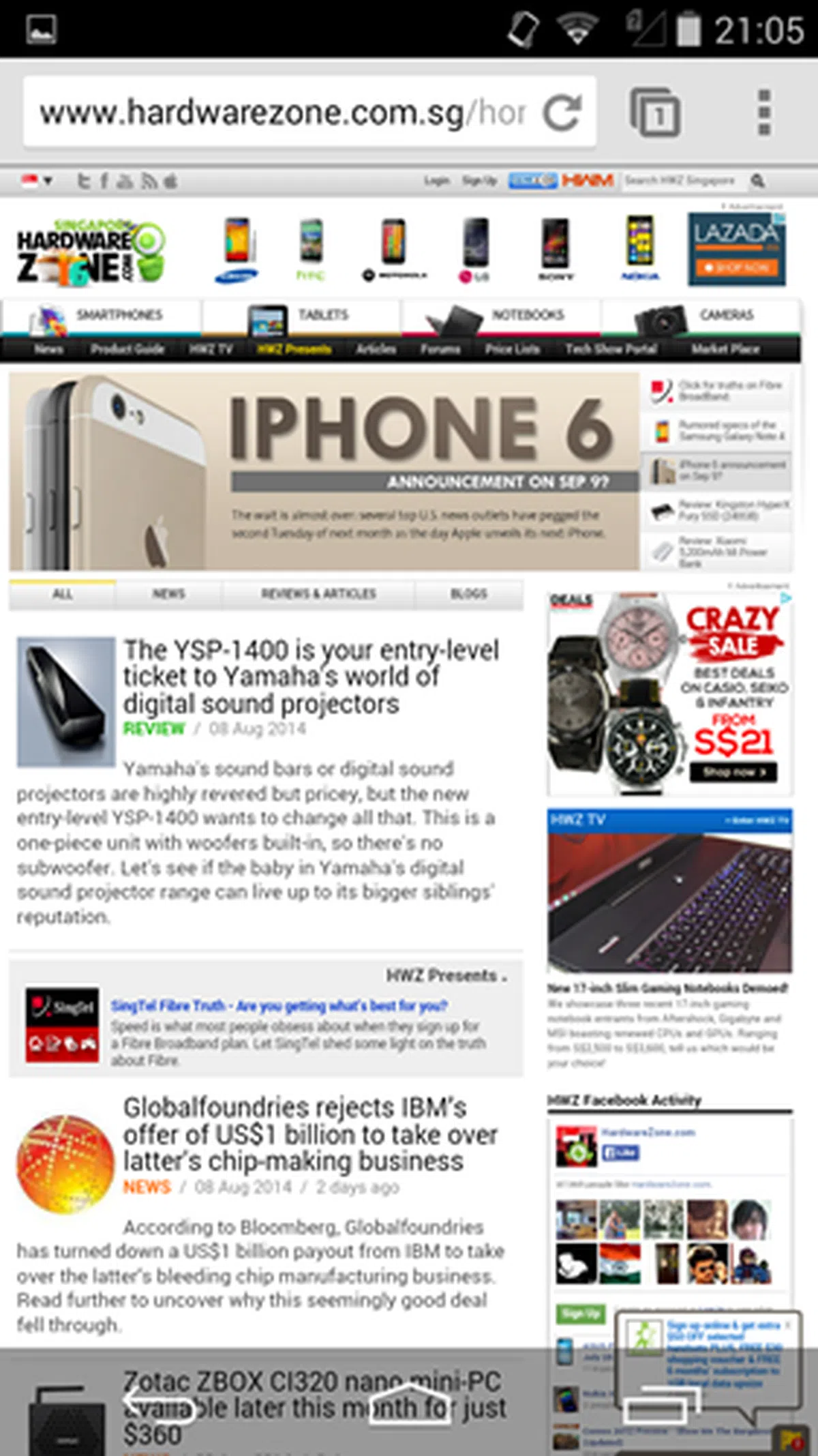 |
Family Mode
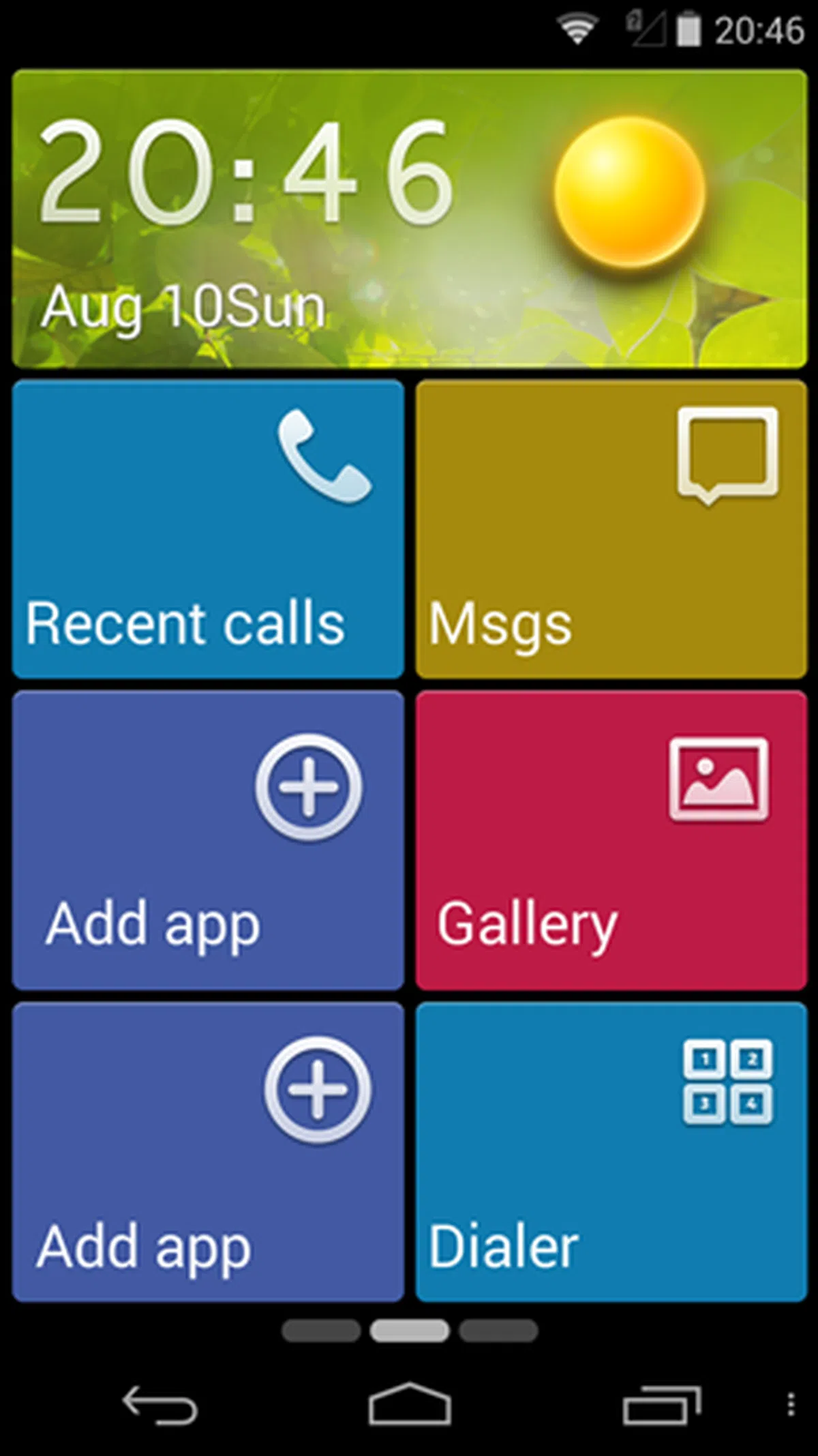 | 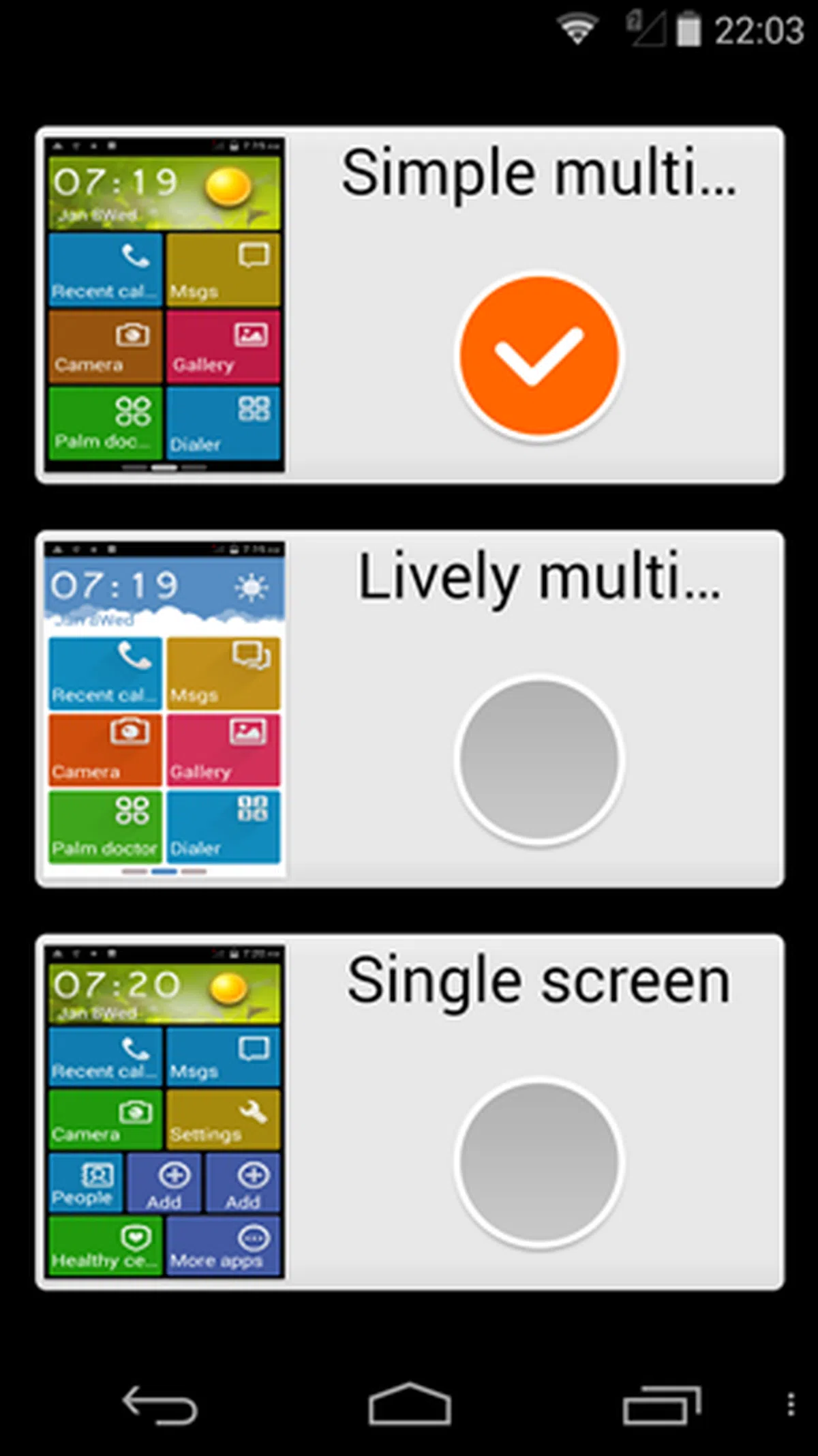 | 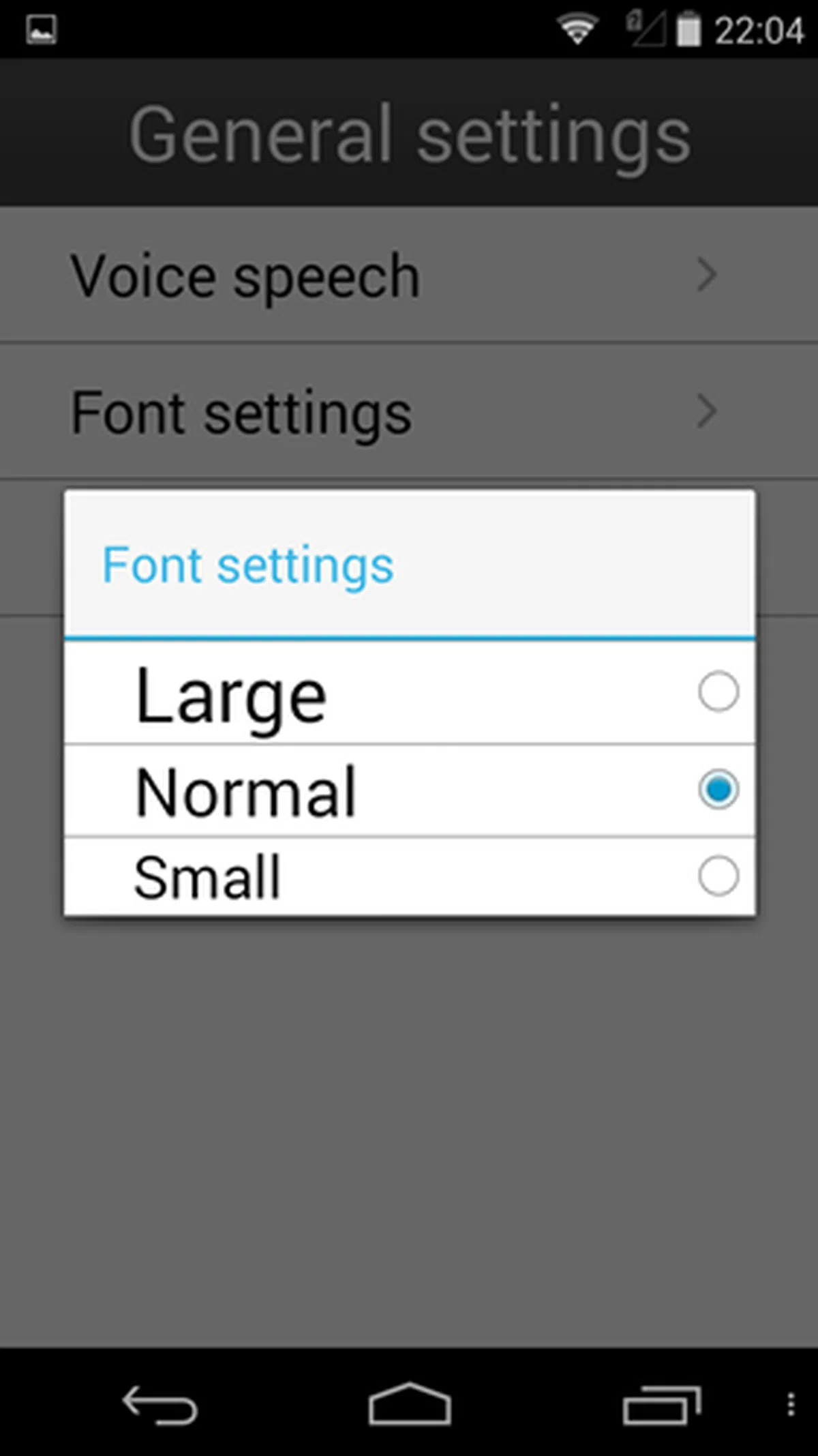 |
To make the Blade VEC 4G easier to use for the elderly, ZTE has a Family Mode where the interface will sport bigger fonts, larger app sizes, and offers easier access to important functions such as the call log and sending text messages.
It also has an Emergency feature, which when enabled, it will appear as a shortcut option on the lock screen. In the event of an emergency, the user only needs to long press on the SOS option for it to automatically make a call and/or send a text message to a preset number after 10 seconds.
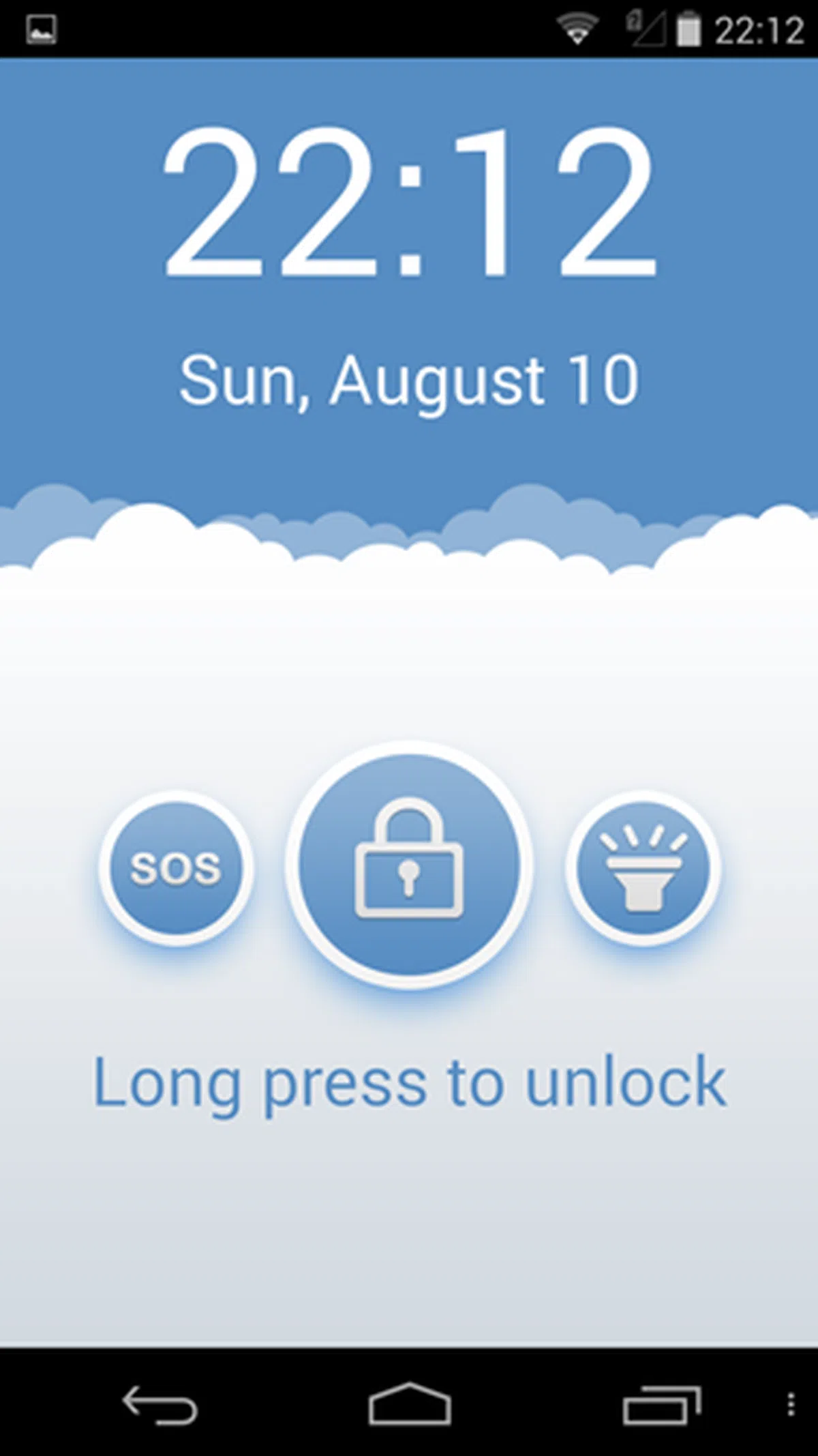 | 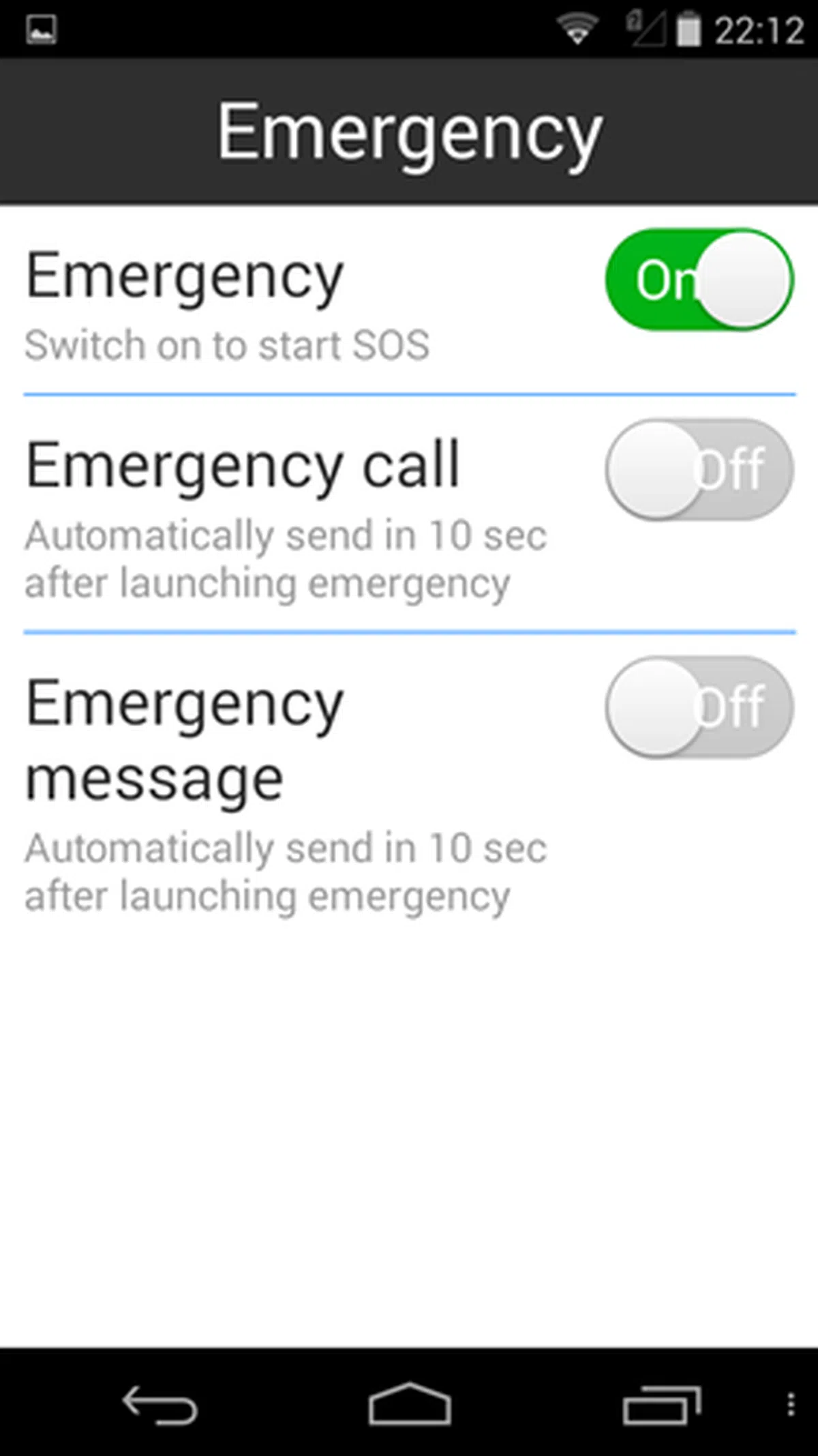 |
Performance Benchmarks
The Blade VEC 4G is driven by a Qualcomm Snapdragon 400 quad-core 1.2GHz processor and 1GB RAM. We will be comparing it against phones of its class and price point, which includes the ZenFone 5, HTC Desire 610, Huawei Ascend G6 4G, Motorola Moto G with 4G, Nokia Lumia 635, Sony Xperia M2 and Xiaomi Mi 3.
Quadrant Results
Quadrant evaluates a device's CPU, memory, I/O and 3D graphics performances.

The Blade VEC 4G is on-par with competing phones of its class in the Quadrant benchmark except the Mi 3, which runs on the newer, faster Snapdragon 800 chipset.
3DMark (2013)
Originally developed as a PC benchmarking tool, 3DMark is now expanded to support multiple platforms including Android OS. The Ice Storm benchmark is designed for smartphones, mobile devices and ARM architecture computers.
For an in-depth understanding of 3DMark for Android, do head over to our article, "3DMark - Android Device GPU Performance Review." In a nutshell, 3DMark consists of three test sections:
3DMark Ice Storm is an OpenGL ES 2.0 benchmark test that uses fixed off-screen rendering at 720p then scales the output to fit the native display resolution of your device. Ice Storm includes two graphics tests designed to stress the GPU performance of your device and a physics test to stress its CPU performance.
3DMark Ice Storm Extreme raises the off-screen rendering resolution to 1080p and uses higher quality textures and post-processing effects to create a more demanding load for the latest smartphones and tablets.
3DMark Ice Storm Unlimited is used to make chip-to-chip comparisons of different chipsets, CPUs and GPUs, without vertical sync, display resolution scaling and other operating system factors affecting the result.

The same could be said about the performance of the ZTE phone in the 3DMark 2013 benchmarks where scores in the three test sections are comparable to the competition. As the Mi 3 runs on the Snapdragon 800 chipset, it maxed out the results in the Ice Storm and Ice Storm Extreme sections. For comparison's sake, the Mi 3 scored 19,412 in the Ice Storm Unlimited section.
SunSpider JavaScript
SunSpider JavaScript helps measure the browsing performance of a device when processing JavaScript. It not only takes into consideration the underlying hardware performance, but also assesses how optimized a particular platform is at delivering a high-speed web browsing experience.

In the SunSpider Javascript, the phones fared differently. The Blade VEC 4G and Xperia M2 came in last while the Mi 3 and Desire 610 are the only phones to score below the thousand milliseconds mark. This only proves that devices with the same hardware specs (same processor, same amount of RAM) may not necessarily deliver similar performance.
Real World Usage Experience
Number crunching aside, the user experience on the Blade VEC 4G was a mixed bag. When we were using the ZTE's own Launcher mode, the operation of the phone felt sluggish. Transitions and closing of apps appeared to take longer than usual. The user experience was more smooth and snappy when we switched to GNL. Family Mode was also noticeably slower than usual which leads us to believe that ZTE needs to work on their software to make it less taxing on the given hardware platform.
Imaging Performance
The Blade VEC 4G comes with an 8-megapixel rear autofocus camera and a 1-megapixel front-facing camera. As usual, we put the rear camera through our standard imaging test:-

The image quality is average; the software seems to over-process a little too much, resulting in grainy photos. Image artifacts can also be seen in the darker areas of the photo.
Battery Performance
Our standard battery test for mobile phones includes the following parameters:
• Looping a 800 x 480-pixel video with screen brightness and volume at 100%
• Wi-Fi and Bluetooth connectivity turned on
• Constant data streaming through email and Twitter


The Blade VEC 4G lasted slightly over six hours in our battery test, which is 30 minutes longer than the ZenFone 5. Based on the Power Consumption chart, the Blade VEC 4G has a slightly lower power draw compared to the ZenFone 5. This explains why the ZTE phone could last about 10% longer. It's acceptable for the Blade VEC 4G to have a higher power draw compared to the rest of the phones (except the Mi 3) as it has a bigger, higher resolution display than most of the phones we've compared.
Portability
We measure the portability of a device by calculating its battery life to (weight x volume) ratio. Thanks to its decent battery life, slim and lightweight form factor, the Blade ZEC 4G was able to keep up with the other phones with smaller footprints, which is commendable for a device of its class.

Real World Battery Performance
But benchmarking gives only one view to the above assessment. To give you a more realistic understanding on how the Blade VEC 4G fared under real world usage conditions, we included screenshots of the usage and history graphs based on this reviewer's usage.
 |  | 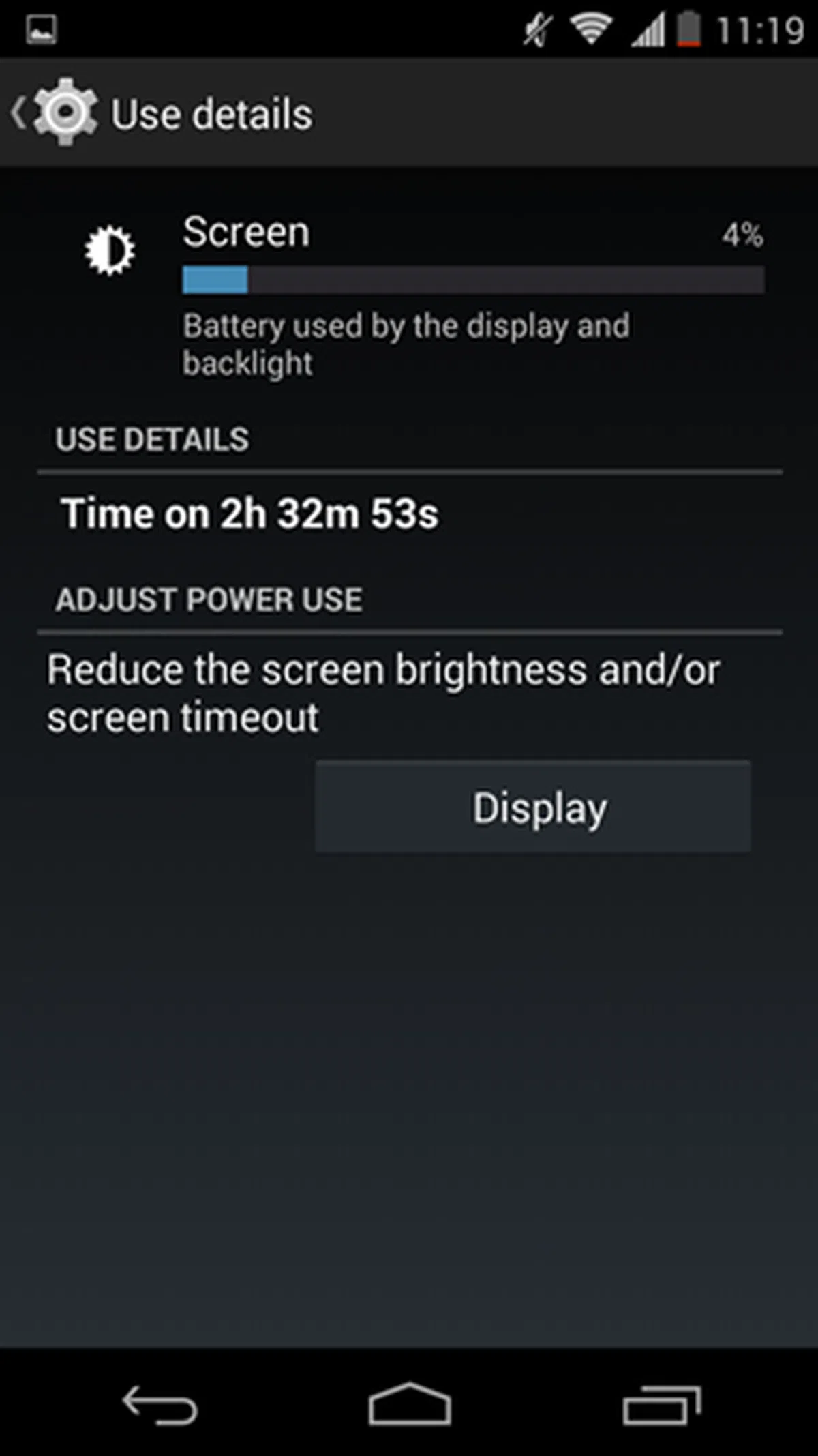 |
As seen from the graphs above, the Blade VEC 4G could last more than a day before the battery hit 10%. Screen-on time is about 2 hours and 33 minutes. Some notes:
- The device logged onto the 3G network because a 3G SIM card was used.
- The device logged onto Wi-Fi connections from time to time.
- The typical usage for this reviewer includes making some voice calls, texting via WhatsApp, capturing some photos and sharing them on social networking sites, the occasional web browsing via Pulse News Reader, and emailing.
To put these numbers into perspective, we compared the real-world usage stats with that of the ZenFone 5 (1GB). While screen-on time is roughly about the same, the Blade VEC 4G could last 17 hours more than the ZenFone 5 (1GB RAM). Do note that battery mileage varies depending on your usage patterns.
Conclusion
The Blade VEC 4G finds itself in a tough spot as it doesn't offer anything particularly new or unique. It may have its own Launcher, but it has several quirks that users should be wary of. In addition, since GNL is now available for download on Android 4.1+ devices, the appeal of having one preloaded on the Blade VEC 4G diminishes. In terms of performance, it is comparable to the competition though battery performance seems to an area it fares slightly better than expected.
Retailing at S$299, the Blade VEC 4G is probably the most affordable large screen Android based 4G phone. Nevertheless, it faces strong competition from the likes of the ASUS ZenFone 5, HTC Desire 610, Motorola Moto G with 4G and Xiaomi Mi 3. The ZenFone 5 is a serious contender if not for its lack of 4G connectivity. It boasts dual SIM functionality, a better design and handling, and delivers exceptional imaging performance for its class. Price is also an advantage for the ZenFone 5; its official retail price is S$249, but you can get one for S$219 from the ASUS Online Store.
Another hot favorite is the Mi 3, which has its retail price slashed to S$299 since June. The Mi 3 offers a higher resolution display, better build quality and a highly customizable MIUI V5 OS, but it has a shorter battery life and lacks 4G connectivity. If 4G connectivity isn't important, the Blade VEC 4G loses one of its key advantages.
If you are looking for a stock Android user experience and willing to pay a little more, the Motorola Moto G with 4G is worthy of your consideration at S$348. It has the same internals as the original Moto G, but now comes with a microSD memory card expansion slot and 4G connectivity.
Tired of Android phones? The Windows Phone 8.1-powered Nokia Lumia 635 can be considered due to its smooth user experience, affordable price tag of S$239 and its ability to support memory cards up to 128GB if you are planning to store a lot of videos and music files on the device. Its drawbacks are its very low resolution display and sub-par imaging quality, but it makes up for being the most affordable 4G phone in the market.
Our articles may contain affiliate links. If you buy through these links, we may earn a small commission.